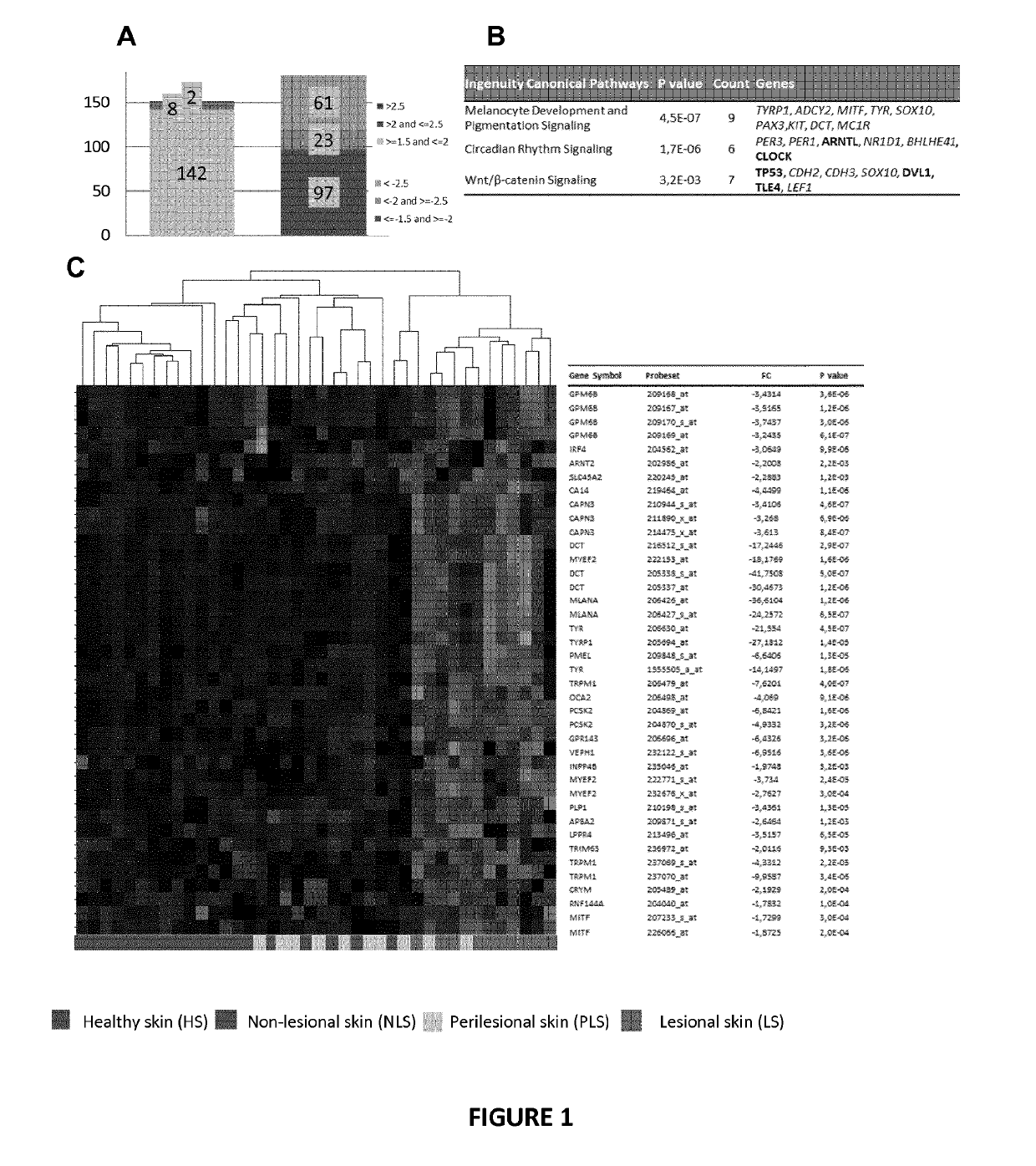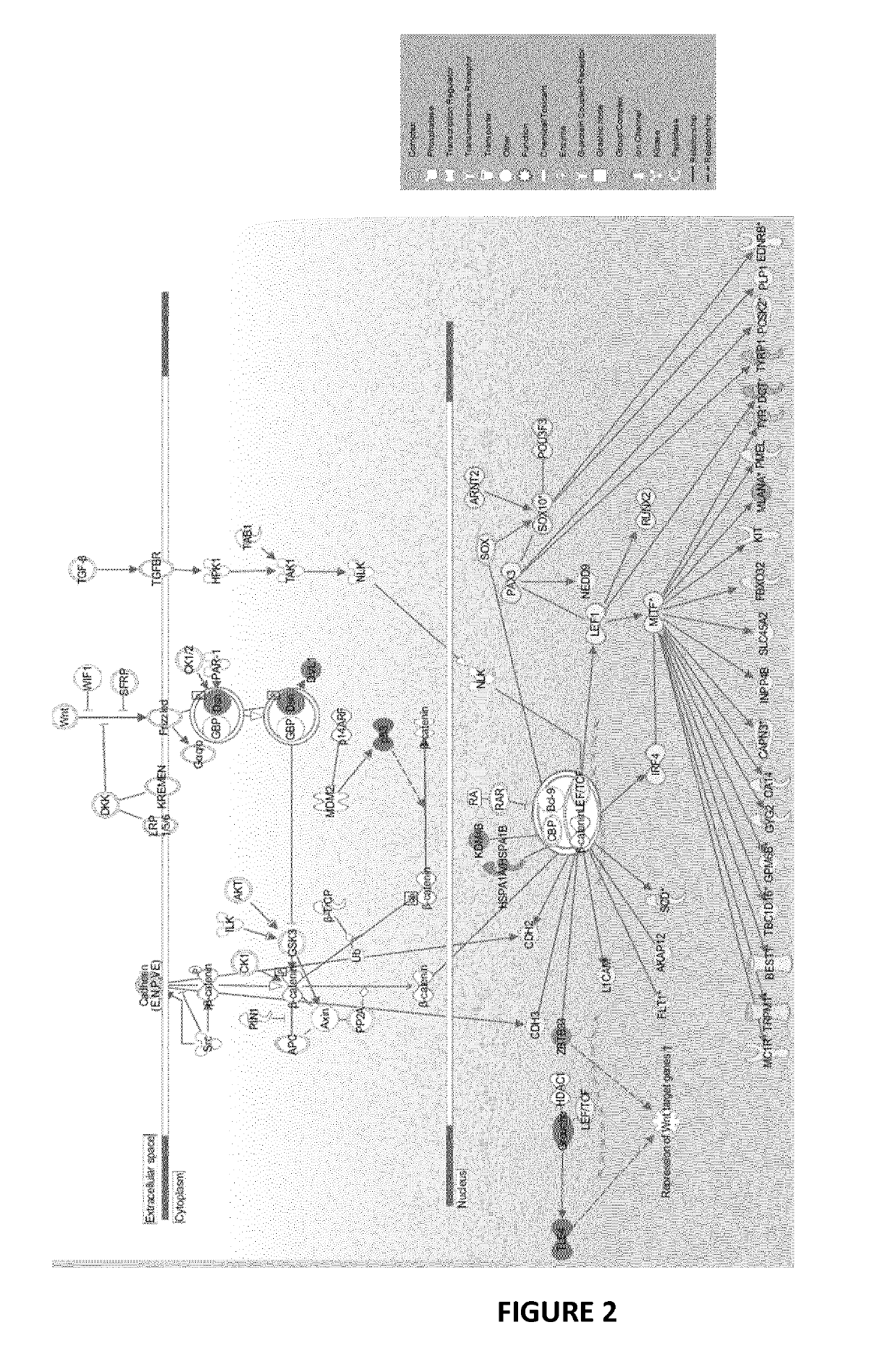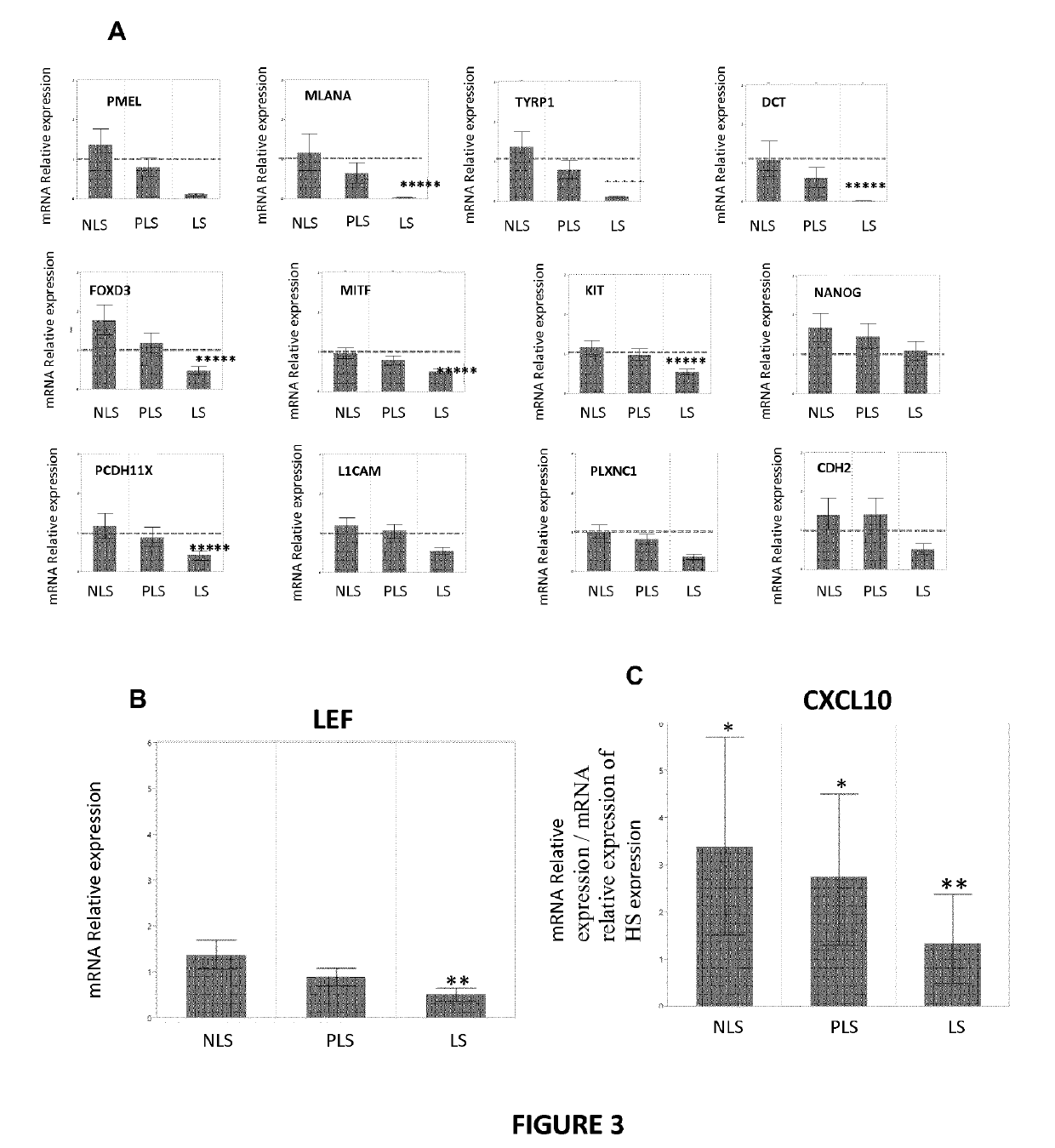Gsk3b and uses thereof in the diagnostic and treatment of hypopigmentation disorders
- Summary
- Abstract
- Description
- Claims
- Application Information
AI Technical Summary
Benefits of technology
Problems solved by technology
Method used
Image
Examples
Embodiment Construction
[0025]A challenge in the treatment of pigmentation disorders is the lack of efficient molecules allowing efficient differentiation and proliferation of new melanocytes in depigmented area of the skin (including hands and feet), typically in vitiligo lesions, of a subject.
[0026]Another challenge is the lack of early, pre-symptomatic detection as visible symptoms of the disorders generally present at advanced stages.
[0027]Here, inventors describe a new therapeutic target, the glycogen synthase kinase-3 beta (GSK3B or GSK-3β), for use for treating an hypopigmentation disorder such as vitiligo. GSKB3 can also be used as a biomarker as it allows specific, reliable and sensitive detection and staging of pigmentation disorders in particular in human subjects (also herein identified as human individuals or human patients).
[0028]The GSK3 enzyme mediates the addition of phosphate molecules onto serine and threonine amino acid residues. First discovered in 1980 as a regulatory kinase for its n...
PUM
| Property | Measurement | Unit |
|---|---|---|
| Biological properties | aaaaa | aaaaa |
Abstract
Description
Claims
Application Information
 Login to View More
Login to View More - R&D
- Intellectual Property
- Life Sciences
- Materials
- Tech Scout
- Unparalleled Data Quality
- Higher Quality Content
- 60% Fewer Hallucinations
Browse by: Latest US Patents, China's latest patents, Technical Efficacy Thesaurus, Application Domain, Technology Topic, Popular Technical Reports.
© 2025 PatSnap. All rights reserved.Legal|Privacy policy|Modern Slavery Act Transparency Statement|Sitemap|About US| Contact US: help@patsnap.com



